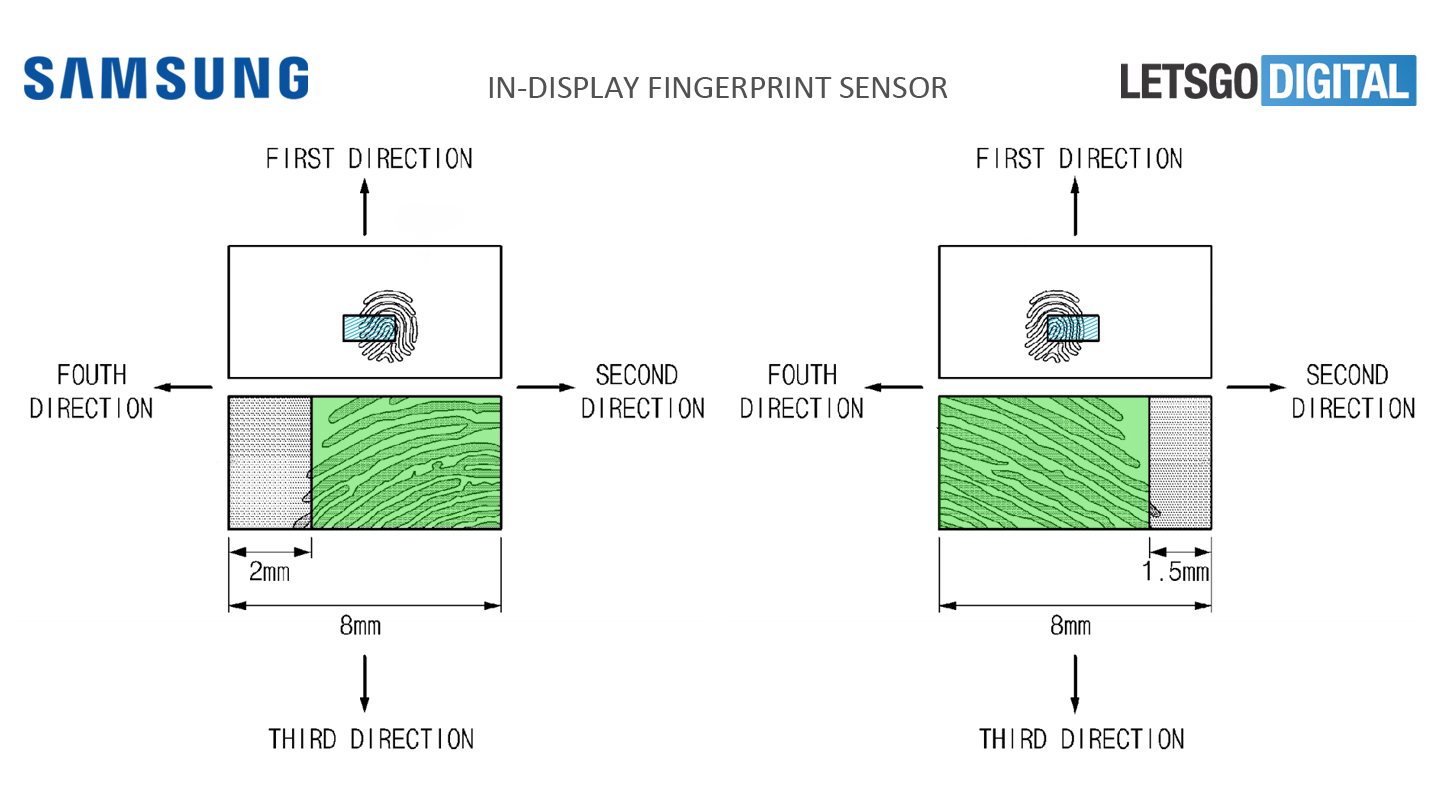Here’s how the Samsung Note 9 in-display fingerprint reader will work
Patent reveals Samsung's fingerprint scanner guides in action


Whether the Samsung Galaxy Note 9 will feature an in-screen fingerprint reader has been the subject of much speculation, with the latest leak claiming that it will indeed have a scanner embedded in the screen.
- All the Samsung Galaxy Note 9 leaks in one place
- Samsung Galaxy S10 rumours: 5G connectivity and more
Of course, you can expect another leak next week claiming the contrary, so we won't really know until Samsung launches the much anticipated phone in August, or possibly July.
Now Dutch site LetsGoDigital has reported on a patent, applied for by Samsung on 11 August and published today, 29 March, that shows how that in-screen fingerprint reader will work.
The issue that Samsung needs to solve is that an in-display fingerprint sensor is smaller than the size of your fingertip and harder to locate than a traditional fingerprint sensor.
So, when a you try to unlock the device, the reader needs to scan your fingerprint in sections and guide you as to where to place your finger next.
In Samsung's patent, this will be done by graphical guides prompting the phone user to swipe their fingertip so that it is properly scanned.
You can see how it works below:
Get all the latest news, reviews, deals and buying guides on gorgeous tech, home and active products from the T3 experts

Samsung's patent application for its in-screen fingerprint scanner
The device will be able to tell which part of your finger has been registered, then use a so-called 'guide', to tell you which direction to swipe in, in order to register the rest of the fingerprint.
This could work in four directions, so, depending when you first place your finger, the device could ask you to swipe left, right, up, or down.
By adding a graphical indicator guide, the in-display fingerprint scanner is better able to recognise a fingerprint, making it more accurate and reducing annoying failed log-in attempts.
It sounds like a smart system, and we can't wait to see if it makes its way into the Note 9 or Samsung Galaxy S10.

Paul Douglas is Global Digital Editorial Strategy Director at Future and has worked in publishing for over 25 years. He worked in print for over 10 years on various computing titles including .net magazine and the Official Windows Magazine before moving to TechRadar.com in 2008, eventually becoming Global Editor-in-Chief for the brand, overseeing teams in the US, UK and Australia. Following that, Paul has been Global Editor-in-Chief of BikeRadar and T3 (not at the same time) and later Content Director working on T3, TechRadar and Tom's Guide. In 2021, Paul also worked on the launches of FitandWell.com and PetsRadar.